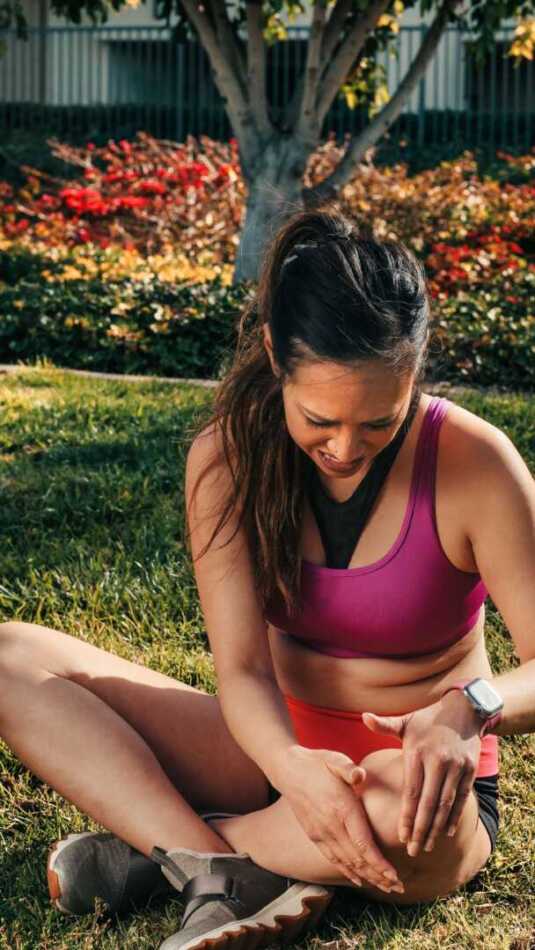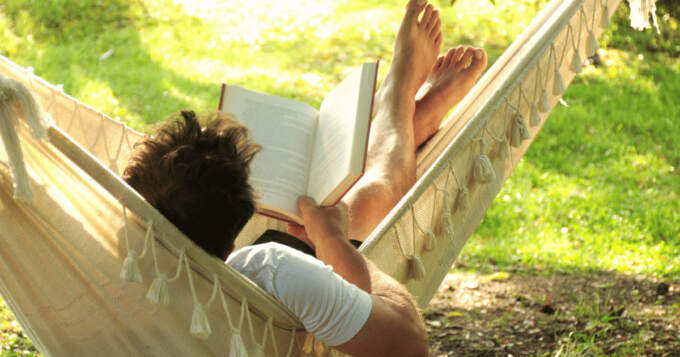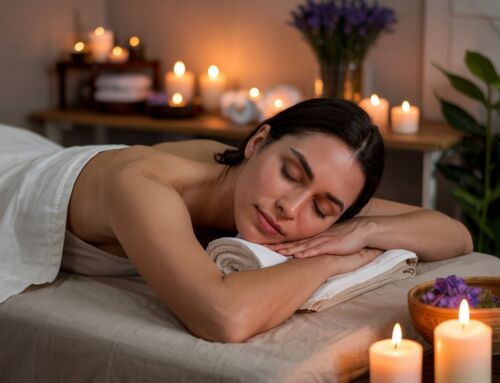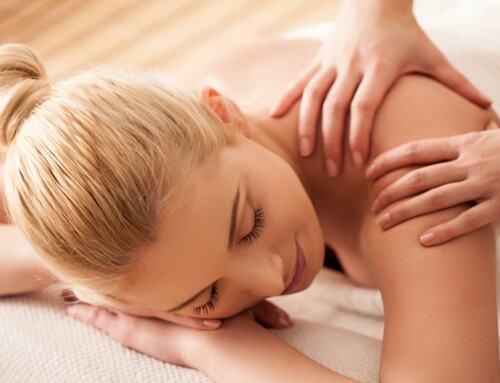True or False: Most Common Running Myths Debunked
Running isn’t just about putting one foot in front of the other; it’s also about sifting through a ton of advice—some of it spot-on and some… well, not so much. With so much information swirling around, it’s easy to get tripped up by a few common myths that have been sprinting around the running world for far too long.
So, here’s the deal: We’re going on a myth-busting marathon, tackling some of the most popular misconceptions head-on. Whether you’re lacing up for the first time or you’ve got enough race bibs to wallpaper your living room, this article is your personal aid station. We’re serving up real facts and leaving those pesky myths in the dust. Ready to hit the ground running? Let’s go!
Myth 1: Running Is Bad for Your Knees
Let’s jump right into the thick of it: the age-old tale that running is a one-way ticket to Knee-Pain Central. You’ve heard it, right? That each stride is practically a kneecap knocker? Well, it’s time to clear the air.
First off, many folks believe that every time your foot pounds the pavement, it’s doom and gloom for your knee joints. They say it’s only a matter of miles before you’re dealing with knee pain, or worse, knee OA (that’s osteoarthritis for the science fans). It’s enough to make new runners and seasoned marathoners alike think twice before hitting the road.
But hold up—let’s lace up with the facts. A heap of studies, including those where healthcare providers have had a good, long look, tell us that running might actually be good for your knees. Yep, you read that right. For example, recent study participants from Middle Tennessee State University showed us that running could improve knee health. How’s that for a plot twist?
Now, if you’re thinking about knee problems and you’re all about that injury prevention life, here’s a pro tip: strength training is your new BFF. Mixing in some squats and lunges can bolster those knee-supporting muscles. And don’t forget about rest days and recovery days—your knees will thank you.
So, before you toss your trainers, remember this: running with a smart plan can be a great way to keep your knees happy. And a happy runner is a better runner. On your marks, get set, debunk! [5 Tips to Help You Run Pain Free]


Myth 2: Stretching Before Running Is Essential
Stretching: It’s the first thing many of us do before a run, like a sacred ritual. The common chant is “stretch to lower your risk of injury,” right? Well, it’s time to stretch our understanding a bit.
Here’s the stretchy scoop: The idea that static stretching before a run is a must-do for every runner isn’t exactly on track. In fact, if you dive into the latest research like a runner into a post-race snack table, you’ll find that static stretching might not be the superhero we thought it was. Instead of giving you a one-up on the track, it could actually dial down your muscle strength and speed. Not exactly what you want on race day, huh?
But don’t pack away your yoga mat just yet. There’s another player in town: dynamic stretching. Think of it as your pre-run dance party. We’re talking leg swings, high knees, and other fun dynamic movements that get your blood flow going and muscles ready to roll. This isn’t your grandma’s stretching routine—dynamic stretching gets the whole body in on the action, warming you up for the long run ahead.
So, lace up those sneakers and save the static stretches for after your run, when they can do some post-workout magic. As for before? Go dynamic and get ready to hit the ground running—literally. Let’s bend the rules and leave this myth in the dust!
Myth 3: You Need to Run Every Day to Improve
Got your running shoes on standby for your daily dash? Hold up! Running every single day might sound like a bulletproof strategy to becoming the next big thing at the Boston Marathon, but let’s pump the brakes on that thought.
Here’s the run-down: a lot of people believe that more is better. The more miles you clock in a day, the closer you are to breaking that tape at the finish line, right? Well, not quite. This is where we talk about the sneaky little thing called overtraining. It’s like inviting muscle cramps and injury risk to a party that definitely wasn’t supposed to be at your place.
Rest days? They’re not just for the easy-going jogger. Even elite runners and those with their eyes on the prize for the next big race need to chill out too. Think of rest days as your body’s built-in mechanics, tuning everything up for the next run. They reduce the risk of injuries, recharge your batteries, and hey, they’re a great excuse to lounge around without feeling guilty.
So, here’s to making those non-running days part of your winning strategy. Because sometimes, the best way to step up your game is to, well, step off the track. And remember, an easy day or a no-run day doesn’t make you any less of a real runner. It just means you’re playing the long game for those longer distances. Ready, set, rest!

Myth 6: You Can’t Run If You’re Over a Certain Age
“Too old to run” — says who? This myth’s got wrinkles, and it’s time to smooth them out. Let’s sprint past the idea that there’s an expiration date on your running shoes once you hit a certain age.
First up, let’s shatter this age-old myth with some real talk: running doesn’t know how many candles were on your last birthday cake. Need proof? Look at age-group runners crushing it at local 5Ks or those seasoned sprinters setting records in the masters’ categories. Heck, there are runners out there who didn’t even start until they retired, and now they’re outpacing the young bucks.
Running is a lifelong sport, a fantastic way to keep your immune system sprinting, your joints healthily jogging, and your heart rate happily hopping. Plus, it’s a killer way to join a community that’s all about cheering on every member, regardless of their birth year.
So, if you’re worried that you’re too late to the running party, worry no more. With a thumbs-up from your healthcare provider, a pair of supportive sneakers, and a can-do attitude, you can hit the ground running at any age. Remember, it’s not about being the fastest or going the longest — it’s about enjoying the race, from start line to finish line. On your marks, get set, defy those years!

Myth 7: There Is No Correct Way to Run
The ‘perfect’ running form — it’s like a mythical creature in the running world. Some say it exists, some say it’s a fairytale. So, what’s the real story? Is there really one right way to run that fits everyone? Spoiler alert: nope.
Here’s the scoop: running is as individual as your morning coffee order. Trying to fit every runner into the same stride is like saying everyone should wear the same size shoes. Not gonna work! The truth is, we’re all built a bit differently — different leg lengths, muscle strengths, and flexibility levels. This means our running mechanics will naturally vary.
Think about it. You’ve got elite runners who glide like gazelles and powerhouses who bulldoze down the track. They’ve each found a stride that suits their body type and their style. And then there’s us, whether we’re weekend warriors or daily joggers, finding our own rhythm between the mailbox and the marathon finish line.
Sure, there are some basics that can help keep you injury-free — like not overstriding or keeping your upper body relaxed — but the best way to run is the way that feels natural and sustainable for you. This might mean working with a running coach or a physical therapist to fine-tune your form, but it’s about finding what clicks for you.
So, lace up, hit play on your favorite running tunes, and find your unique running groove. Because the correct way to run is the way that gets you to the finish line feeling like a rockstar, not a robot. Ready, set, run your way!

Myth 8: The Longer the Stride, the Faster the Speed
Stride it out and speed up, right? If only it were as simple as stretching your legs a bit further to zip around like the Road Runner. But hold your horses—or should we say, sneakers—because when it comes to stride length, longer isn’t always the fast-track to speed.
Let’s break it down. You might think that a longer stride equals less work, like taking one giant leap for mankind every step. But in reality, overstriding can be like putting the brakes on mid-sprint. It’s a one-way ticket to inefficient running and, even worse, it could send your injury risk soaring higher than your heart rate.
So, what’s the secret to that speedy, efficient run? It’s all about finding that Goldilocks zone—your optimal stride length. Not too long, not too short, just right for your body mechanics and fitness level. And guess what? This sweet spot helps you conserve that precious energy, so you’re running smarter, not harder.
A great way to dial in your stride is with a bit of speed work and tempo runs. They’re like the running world’s answer to fine-tuning your engine. And don’t forget about those dynamic stretches and leg swings—they’re your pre-run prep to keep those muscles supple and your stride on point.
So next time you hit the pavement, remember that the best stride is the one that feels natural and keeps you running happy, healthy, and yes, speedy. Now, ready to hit your personal best with a stride that’s just right for you? Let’s go!
Myth 9: Humans Were Meant to Run Heel-to-Toe
“Heel strike first, then the rest will follow”—sounds like a neat little mantra for runners, doesn’t it? Well, it’s time to put a new spin on this old record. The idea that the heel-to-toe roll is the be-all and end-all of running form is about as outdated as those chunky 80s sneakers.
Let’s jog through some fun facts: our ancestors weren’t exactly prancing heel-first while chasing down dinner. And today’s runners? Well, they’re a mixed bag. Some are heel strikers, others hit midfoot, and a few land on their toes like they’re stepping over hot coals. The point is, there’s a whole spectrum of footstrike patterns, and they’re all as natural as your love for a post-run snack.
The real deal is about what works for your unique running mechanics. It’s about how your entire body comes together—like a well-oiled machine—in the act of running. That’s right, from your high knees down to your fancy footwork, every part has its role in propelling you forward.
And let’s not forget about those leg swings and dynamic stretches. They’re not just there to make you look good while you wait for your running buddy. They’re about prepping your muscle tissue for whatever your feet decide to do once you start moving.
So, should you be a heel striker, a midfoot master, or a tiptoe champion? The answer’s as personal as your playlist. The best advice is to go with the flow—your body’s flow, that is. Lace up, find your rhythm, and run in a way that feels like you’re soaring, not sore-ing. After all, the best footstrike is the one that takes you on happy, healthy runs, all the way to the finish line.

Alright, fellow pavement-pounders and treadmill-trotters, we’ve sprinted through the myths and now it’s time to cool down with some parting thoughts.
Debunking these tall tales is more than just a victory lap around the rumor mill—it’s about setting the record straight for a happier, healthier running journey. It’s about not letting old wives’ tales dictate your pace or your race. By kicking these myths to the curb, we open up a whole new track where understanding meets enjoyment, and where every run is tailored just for you.
So, what’s next? Experimentation! Mix up your running routine with a dash of dynamic stretches on one day and a sprinkle of strength training on another. Try out different running programs, from high volume to lower-impact exercises, and see what makes your heart rate sing. And hey, don’t forget to consult with a running coach or a sports medicine researcher if you’re looking to geek out on the specifics.
Remember, running isn’t one-size-fits-all. It’s a journey as unique as the runner lacing up their shoes. There’s a spot for everyone in this great big running world—from the newbie in the back of the pack to the professional athletes leading the charge. Progressive training, easy runs, complex carbohydrates for fuel, and even those cold weather jaunts all have their place.
And on those days when you’re questioning your love for the run, just remember why you started. Whether it was for weight loss, the sheer joy of the wind in your face, or the glory of crossing that finish line, running is about finding your personal stride in this wild, wonderful world.
So, take the medical advice that suits you, listen to your body, and craft a running experience that’s as good for your soul as it is for your soles. Whether you’re gearing up for marathon training or just chasing after the bus, you’re part of the tribe now. Welcome to the great place where every step, every breath, and every mile is yours to claim.
Ready to rewrite your running story? The path is wide open. Let’s run this world!
You’ve busted the most common running myths and now you’re flying high on those endorphins. But let’s be real—sometimes the victory lap leaves you feeling like you’ve wrestled a bear rather than breezed through the park. Those aches and that “I’ve-run-a-marathon” stiffness can sneak up on you, whether you’re a 5K newbie or a marathon veteran.
Here’s where we hand the baton over to the pros at Body Ache Escape. They’re the pit crew ready to fine-tune your muscles with a massage that’ll have you purring like a well-oiled machine, or a sauna session that’ll melt away the mileage. So why not give your hardworking body the TLC it deserves? Go on, schedule an appointment and treat those muscles to their own finish-line ribbon.
And hey, while you’re floating out of Body Ache Escape in post-massage bliss, don’t keep the secret to yourself. Share this article with your running buddies, your frenemies at the track, or that person huffing and puffing past your window right now. Let’s spread the word and educate the running community, one soothing rubdown at a time.
So, what are you waiting for? Book that massage or sauna session and share the love! Your body—and your fellow runners—will thank you. On your marks, get set, relax!







